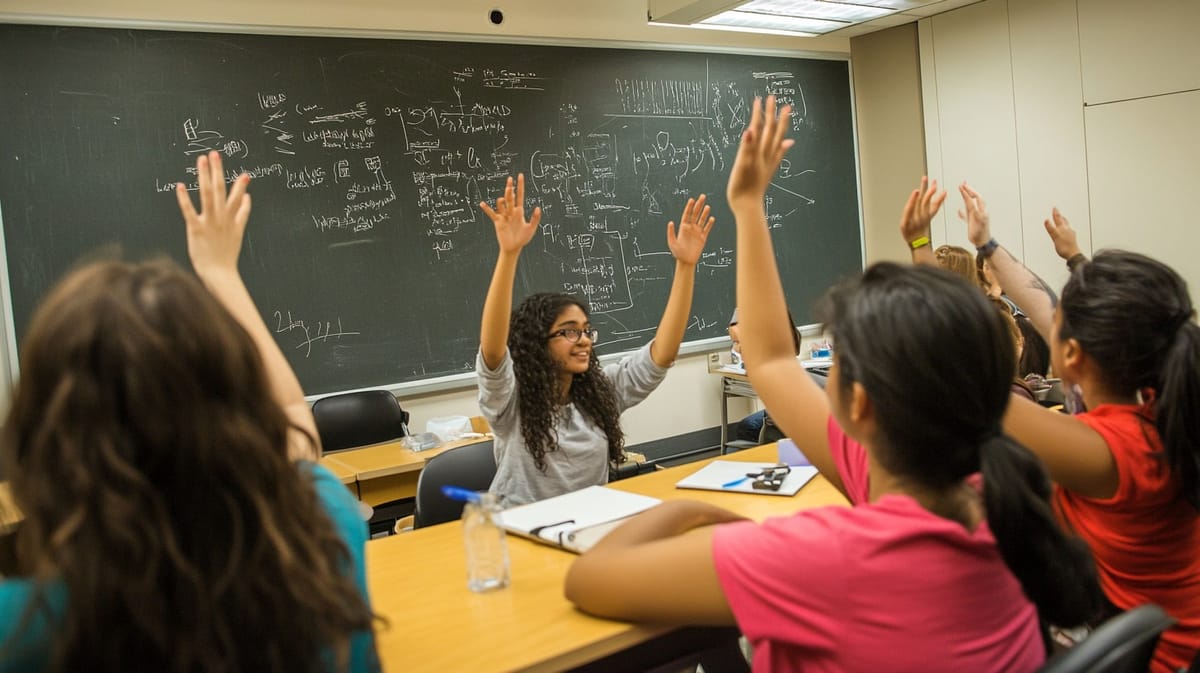Why Schools Should Spark Kids’ Questions

It’s a sunny Tuesday morning at Green Valley School, and Ms. Priya’s 6th-grade science class is buzzing. They’re learning about gravity, and hands are shooting up. “Why doesn’t the moon fall on us?” asks Riya, blushing as a few kids giggle. “If I jump, does gravity get tired?” pipes up Arjun, sparking more laughs. Ms. Priya smiles, not dismissing the questions but diving in with answers that spark curiosity. By the end of the week, Riya’s asking, “How does gravity affect astronauts?” and Arjun’s wondering, “Can gravity bend light?” What changed? They were encouraged to ask—silly or not.
At Tailwnd, we believe schools should make question-asking a habit, not a rarity. It’s the key to unlocking critical thinking, boosting analytical skills, and raising kids who think deeply about the world. Here’s why every classroom should be a safe space for questions—and how parents can help.
The Power of Asking Questions
Questions are the spark plugs of learning. When kids ask, they’re not just seeking answers—they’re wrestling with ideas, connecting dots, and building mental muscle. A 2018 study in Educational Psychology Review found that students who ask questions retain information 30% better than those who passively listen. Why? Asking forces the brain to process, challenge, and reframe what it hears.
But it’s not just about memory. Questions train kids to think critically. When Riya asks why the moon doesn’t crash, she’s not just curious—she’s questioning assumptions, testing logic, and piecing together cause and effect. These are the roots of critical thinking: the ability to analyze, evaluate, and create. In a world that values problem-solvers over memorizers, question-asking is a superpower.
From “Stupid” to Brilliant: The Journey of Questions
Let’s be honest—kids will ask some head-scratchers. “Do clouds sneeze?” or “Why is math so mean?” might sound silly, but they’re the starting line. Every great thinker began with clumsy questions. The key is creating a space where no question is “stupid.” When teachers welcome all queries with patience, kids gain confidence. In days, those goofy questions evolve into sharp, meaningful ones.
Take Arjun’s class. At first, his “gravity gets tired” question drew giggles. But Ms. Priya’s thoughtful response—“Gravity’s a force, not a person, but let’s explore how it works!”—kept him asking. By week’s end, he was digging into light and gravity, a budding physicist in the making. This shift happens when schools reward curiosity, not perfection.
How Questions Build Analytical Skills
Question-asking isn’t just about curiosity—it’s a workout for the brain’s analytical engine. When kids ask “why” or “how,” they’re practicing:
- Pattern recognition: Spotting connections, like linking gravity to planetary orbits.
- Problem-solving: Breaking down complex ideas into manageable parts.
- Skepticism: Challenging facts to understand what’s true and why.
- Creativity: Imagining possibilities beyond the textbook.
A 2020 Journal of Educational Research study showed that students trained to ask questions scored 25% higher on analytical tasks than those taught traditionally. Why? Questions force kids to engage actively, not just absorb passively. They learn to dissect problems, weigh evidence, and think independently—skills that shine in exams, careers, and life.
The Role of Parents: Make Questions a Dinner Table Topic
Parents, you’re half the equation. Imagine this: at dinner, instead of asking, “How was school?” you say, “What question did you ask your teacher today? What did you learn from it?” It’s a game-changer. Kids feel valued for their curiosity, not just their grades. It also builds a habit of reflection, helping them process what they’ve learned.
Try this:
- Celebrate all questions. If your child asks, “Why is the sky blue?” don’t just answer—ask, “What do you think?” to spark deeper thinking.
- Model curiosity. Share your own questions, like, “I wonder how this app works?” to show questioning is normal.
- Connect to real life. If they ask about rain, take them outside to feel it, linking questions to experience.
How Schools Can Foster a Question-Asking Culture
Schools, it’s time to rethink the classroom. Here’s how to make question-asking a habit:
- Create a safe space. Train teachers to welcome every question, no matter how odd, with enthusiasm. A laugh-free zone builds confidence.
- Teach questioning skills. Use prompts like “Why do you think that?” or “What if?” to guide kids toward deeper questions.
- Reward curiosity. Give points or praise for great questions, not just right answers.
- Incorporate inquiry-based learning. Let kids explore topics through projects, where questions drive discovery.
At Tailwnd, we’re helping schools do just that. Our programs train teachers to foster curiosity and critical thinking, using cognitive science to turn classrooms into hubs of inquiry. We design activities that encourage kids to ask, explore, and grow—because a question today could spark a breakthrough tomorrow.
The Payoff: Kids Who Think for Themselves
When schools and parents champion questions, kids don’t just learn—they thrive. They become analytical thinkers who tackle problems with confidence, whether it’s a science experiment or a life decision. They grow into adults who innovate, challenge the status quo, and shape the future.
So, let’s stop shushing the “silly” questions. Let’s cheer for every “why,” “how,” and “what if.” Because when kids ask, they’re not just learning—they’re becoming the critical thinkers our world needs.
Your Turn: How do you encourage questions at home or school? Share your tips below or tweet us @TailwndAI. Want to bring Tailwnd’s curiosity-driven approach to your classroom? Email info@tailwnd.com. Let’s raise kids who never stop asking why!





